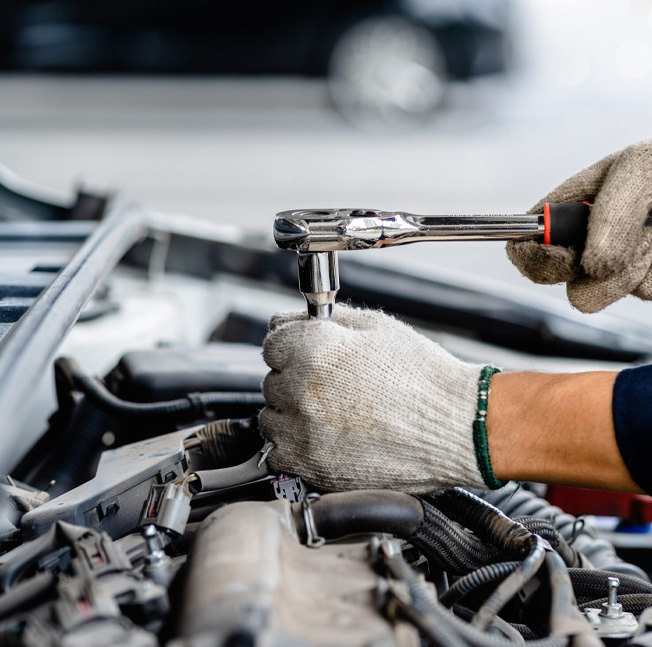ធ្នូ . 28, 2024 15:45 Back to list
Hydraulic Cylinder Seals and Wipers for Enhanced Performance and Durability
Understanding Hydraulic Cylinder Seals and Wipers A Comprehensive Overview
Hydraulic systems are fundamental to various industrial applications, from manufacturing machinery to aerospace equipment. At the heart of these systems lies the hydraulic cylinder, a crucial component tasked with converting hydraulic energy into mechanical force. To ensure optimal performance and longevity of hydraulic cylinders, two key elements must be maintained seals and wipers. This article delves into the importance of hydraulic cylinder seals and wipers, their types, functions, and maintenance.
The Role of Seals in Hydraulic Cylinders
Seals in hydraulic cylinders serve several critical purposes
1. Preventing Leakage One of the primary functions of seals is to prevent hydraulic fluid from leaking out of the cylinder. This leakage can lead to a loss of pressure, decreased efficiency, and ultimately, system failure. Seals effectively create a barrier that keeps the hydraulic fluid contained within the system.
2. Maintaining Pressure Seals help maintain the pressure within the hydraulic cylinder, which is essential for the proper functioning of the hydraulic system. A well-sealed cylinder ensures that the necessary force is generated for the hydraulic system to operate efficiently.
3. Protecting Against Contaminants Seals also play a vital role in keeping contaminants, such as dust, dirt, and moisture, from entering the hydraulic system. Contaminants can cause wear and tear on internal components, leading to reduced performance and potential failures.
Types of Hydraulic Cylinder Seals
There are various types of seals used in hydraulic cylinders, each designed for specific applications and conditions
1. Rod Seals These seals are located at the rod entrance of the cylinder. They are designed to prevent fluid from leaking out as the rod extends and retracts. Rod seals can be made from elastomers, polyurethanes, or PTFE, depending on the application requirements, such as temperature, pressure, and compatibility with hydraulic fluids.
2. Piston Seals Piston seals are situated at the piston, and their primary function is to prevent fluid from leaking past the piston as it moves within the cylinder. Similar to rod seals, they come in a variety of materials and designs to suit different pressure ranges and fluid types.
3. End Caps Seals These seals are found at the ends of the cylinder and are responsible for retaining fluid within the cylinder. They serve to maintain the overall integrity and efficiency of the hydraulic system.
hydraulic cylinder seals and wipers

The Importance of Wipers
Wipers, often referred to as scrapers, are another essential component of hydraulic cylinders. Their function is primarily to keep the cylinder clean by preventing contaminants from entering the cylinder and damaging the seals.
1. Contaminant Removal As the rod moves in and out of the cylinder, wipers scrape away dirt, debris, and other foreign materials. This helps maintain the integrity of the seals and reduces the risk of premature wear.
2. Extending Seal Life By preventing contaminants from entering the cylinder, wipers help prolong the life of seals. This, in turn, increases the overall longevity of the hydraulic cylinder and reduces maintenance costs.
Maintenance of Seals and Wipers
Regular maintenance of seals and wipers is crucial for the efficient functioning of hydraulic cylinders. Here are some maintenance tips
1. Regular Inspections Routine checks for wear and damage can help identify potential issues before they escalate. Inspecting seals and wipers for cracks, abrasions, or degradation can save costs related to unplanned downtime and repairs.
2. Cleaning Keeping the hydraulic cylinder clean is vital. Regularly cleaning the wipers and surrounding areas prevents the accumulation of dirt and contaminants that may compromise the seal's effectiveness.
3. Lubrication Proper lubrication of seals can reduce friction and wear, enhancing their lifespan. Ensure that the seals are compatible with the hydraulic fluid being used.
4. Replacement Relying on manufacturer guidelines for replacing seals and wipers is essential. Regular replacement, based on usage and inspection findings, will help maintain system integrity.
Conclusion
Hydraulic cylinder seals and wipers are indispensable in maintaining the efficiency and longevity of hydraulic systems. Understanding their roles, types, and maintenance practices can significantly improve the performance and durability of hydraulic cylinders, resulting in savings on maintenance and increased operational efficiency. By taking proactive steps to ensure these components are in optimal condition, businesses can mitigate risks and enhance their hydraulic system's reliability.
-
Wiper Oil Seal: Our Commitment to Clean Hydraulics
NewsAug.13,2025
-
Hydraulic Oil Seal for Self Discharging Cars
NewsAug.13,2025
-
Hub Oil Seal for Agricultural Tractor Hubs
NewsAug.13,2025
-
Skeleton Oil Seal with NBR Material
NewsAug.13,2025
-
Rotary Lip Seal for High Pressure Applications
NewsAug.13,2025
-
Cylinder Seal Kits Our Legacy of Hydraulic Trust
NewsAug.13,2025
-
Unlocking the Potential of Hydraulic Systems with Essential Sealing Solutions
NewsAug.06,2025
Products categories
















